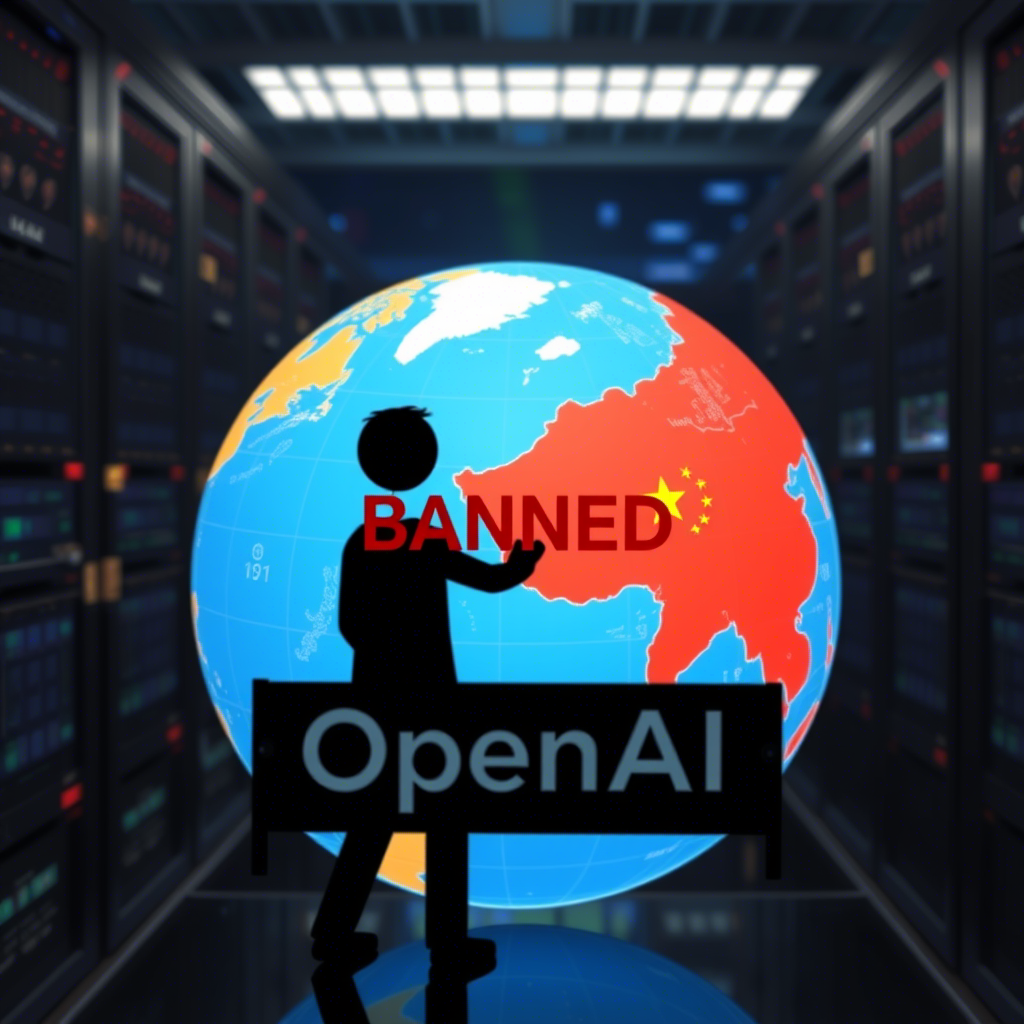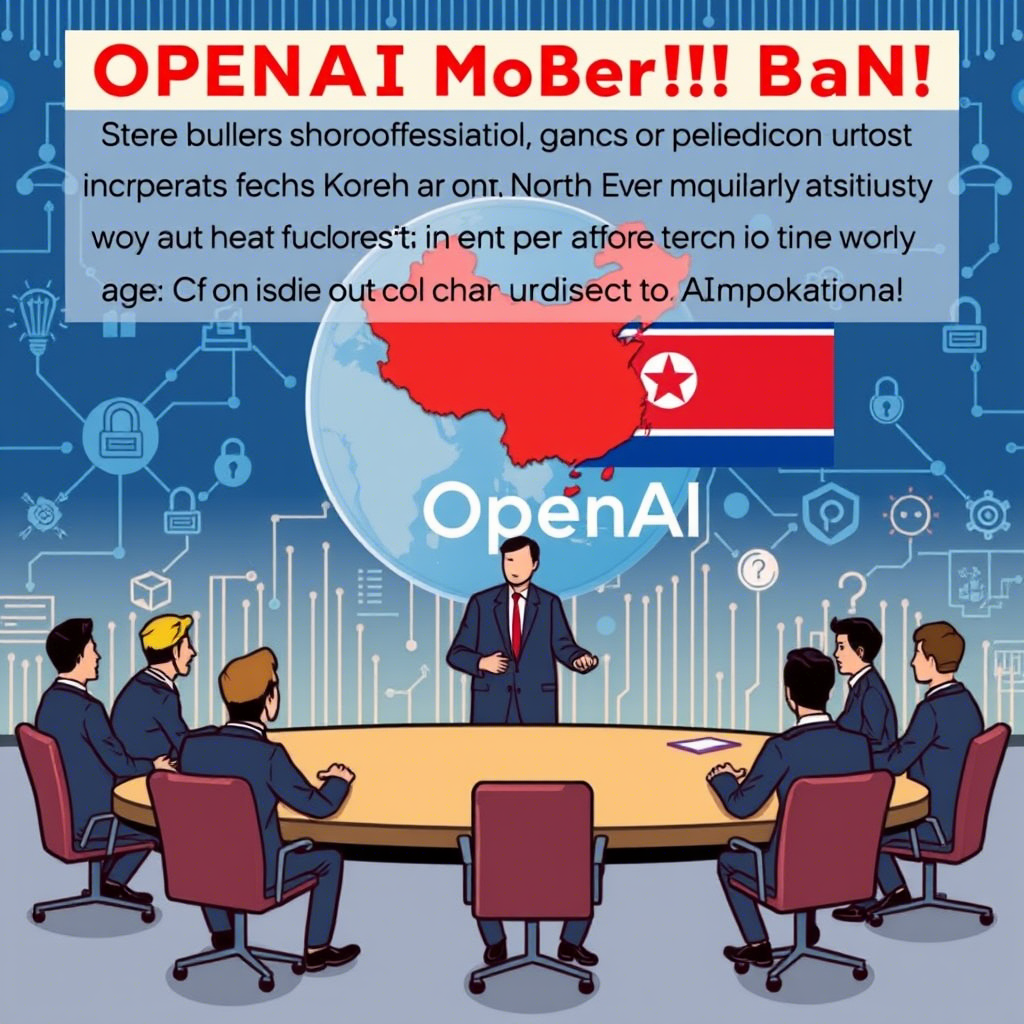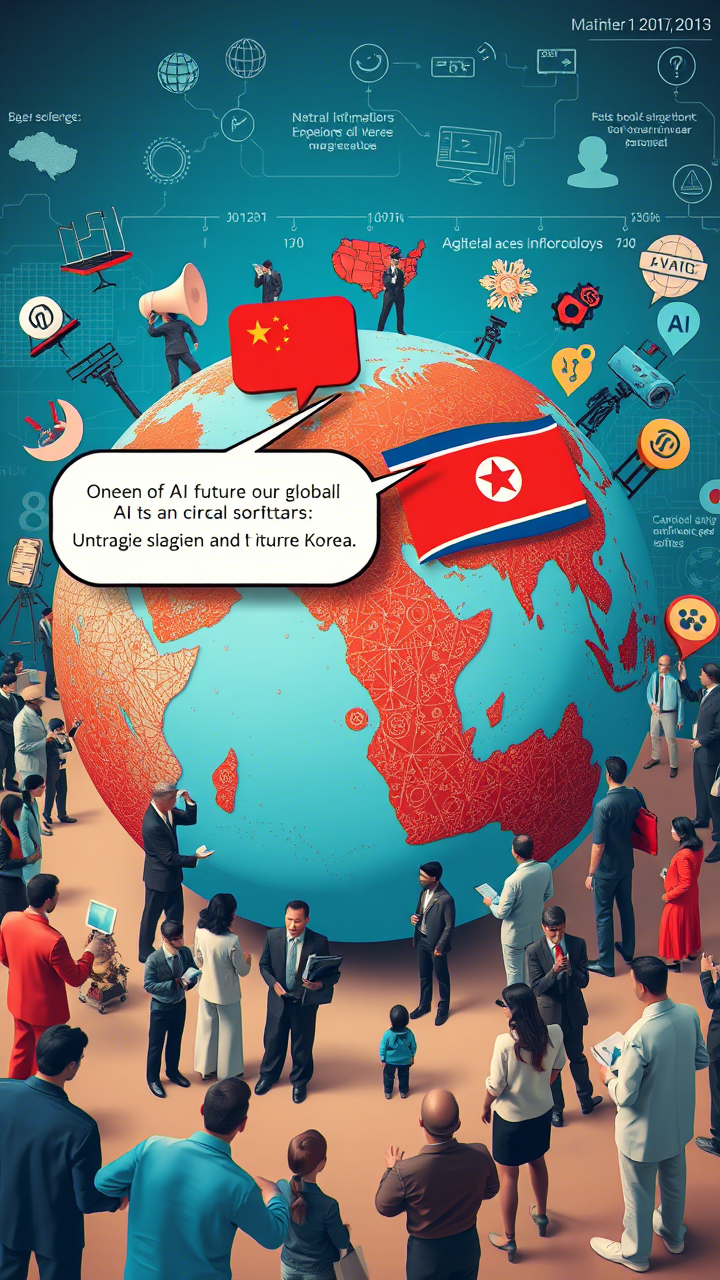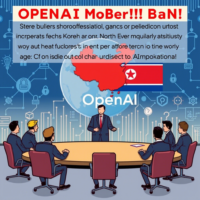In the rapidly evolving landscape of artificial intelligence, ethical considerations and security concerns have become paramount. As AI tools like OpenAI’s ChatGPT gain widespread adoption, they also attract misuse by bad actors seeking to exploit their capabilities for malicious purposes. Recently, OpenAI made headlines when it announced that it had taken action against users from certain regions, including China and North Korea, suspected of engaging in harmful activities. This decision has sparked debates about censorship, global access to technology, and the responsibility of tech companies to safeguard society.
This blog explores the reasons behind OpenAI’s actions, the implications for affected users, and the broader ethical dilemmas posed by this move. It also examines how other organizations might respond to similar challenges as AI continues to reshape our world.

The Background: OpenAI’s Commitment to Responsible AI
OpenAI is one of the leading names in the field of artificial intelligence, renowned for developing cutting-edge models such as GPT-3, GPT-4, and the widely popular ChatGPT. These tools are designed to assist users with tasks ranging from creative writing to complex problem-solving. However, with great power comes great responsibility—and OpenAI has been vocal about its commitment to ensuring that its technologies are used responsibly.
To uphold these values, OpenAI employs a range of measures, including content moderation policies, user guidelines, and advanced algorithms to detect and prevent misuse. Despite these efforts, malicious actors continue to find ways to abuse AI systems. In recent months, reports emerged suggesting that some users from specific regions were leveraging OpenAI’s platforms for nefarious purposes, prompting the company to take decisive action.
What Happened? OpenAI Suspends Accounts Linked to Malicious Activity
According to OpenAI, the suspension of accounts primarily targeted individuals and entities suspected of using its AI tools for activities such as generating spam, phishing scams, disinformation campaigns, or even cyberattacks. While OpenAI did not disclose detailed specifics about each case due to privacy concerns, the company emphasized that the decision was based on extensive investigations into patterns of suspicious behavior.
Key Points:
- Geographic Focus : The majority of suspended accounts were linked to users in China and North Korea. OpenAI cited evidence indicating that these regions had higher concentrations of malicious activity compared to others.
- Pattern Analysis : Advanced analytics revealed recurring behaviors, such as automated account creation, rapid deployment of harmful content, and attempts to bypass safeguards.
- Collaboration with Authorities : OpenAI reportedly worked closely with cybersecurity experts and law enforcement agencies to gather data and validate findings before taking action.
While the move was intended to protect the integrity of OpenAI’s platform, it drew criticism from those who viewed it as overly broad or potentially discriminatory. Critics argued that innocent users in these regions could be unfairly penalized, further exacerbating existing digital divides.

Why China and North Korea? Understanding the Context
China and North Korea have long been associated with state-sponsored hacking, intellectual property theft, and online misinformation campaigns. For instance:
- China : Chinese hackers have been implicated in numerous high-profile breaches targeting governments, corporations, and research institutions worldwide. Additionally, Beijing’s influence operations often involve spreading propaganda through social media platforms.
- North Korea : Known for its aggressive cyberwarfare tactics, Pyongyang routinely deploys hackers to steal funds, disrupt critical infrastructure, and conduct espionage.
Given this context, it is unsurprising that OpenAI identified these countries as hotspots for malicious AI usage. However, critics caution against stereotyping entire populations based on the actions of a few bad actors.

Implications for Affected Users
For legitimate users in China and North Korea, OpenAI’s decision raises significant concerns about accessibility and fairness. Many individuals rely on AI tools for education, business, and personal development, yet they may now face barriers to accessing these resources. Some key questions arise:
- How Are Innocent Users Impacted? Legitimate users who abide by OpenAI’s terms of service but reside in restricted regions may struggle to regain access to the platform. Even if they appeal the suspensions, the process can be time-consuming and cumbersome.
- Does This Create a Digital Divide? By limiting access to advanced AI tools, OpenAI risks widening the gap between technologically privileged and disadvantaged communities. Critics argue that denying access to knowledge-sharing platforms disproportionately affects already marginalized groups.
- Are There Alternatives? While alternative AI providers exist, none offer the same level of sophistication or reliability as OpenAI. Furthermore, switching platforms requires additional effort and investment, which smaller businesses or individual learners may not afford.
Ethical Dilemmas and Broader Implications
OpenAI’s decision highlights several pressing ethical issues that all tech companies must confront as AI becomes more pervasive:
1. Balancing Security and Accessibility
Tech firms must strike a delicate balance between maintaining secure platforms and ensuring equitable access. Overly restrictive policies risk alienating legitimate users, while lenient ones invite exploitation by malicious actors. Finding the right middle ground is challenging but essential.
2. Global Governance of AI
As AI transcends national borders, there is an urgent need for international frameworks governing its use. Without standardized regulations, companies like OpenAI are left to navigate murky waters independently, often making decisions that affect millions of people globally.
3. Accountability and Transparency
When companies suspend accounts en masse, transparency is crucial. Users deserve clear explanations regarding why their accounts were terminated and what steps they can take to resolve the issue. Without sufficient clarity, trust erodes, and public backlash ensues.
4. Censorship Concerns
Some observers worry that OpenAI’s actions set a dangerous precedent for censorship. If tech giants begin restricting access to information based on geopolitical considerations, it could undermine free expression and innovation.
Responses from Other Tech Companies
OpenAI is not alone in grappling with these challenges. Other major players in the AI space, such as Google (with Bard) and Meta (with Llama), face similar dilemmas. How they choose to address them will shape the future of AI governance.
One potential approach involves implementing region-specific policies tailored to local contexts. For example, companies could collaborate with regional authorities to develop customized solutions addressing unique threats without compromising accessibility. Another option is investing in robust detection mechanisms capable of distinguishing between benign and malicious users more effectively.
Ultimately, fostering partnerships among governments, academia, and industry stakeholders will be vital in creating a safer, more inclusive AI ecosystem.
Conclusion: Navigating the Complexities of AI Regulation
OpenAI’s removal of users suspected of malicious activities underscores the complexities inherent in regulating AI. While the company acted to protect its platform and users, its decision raises important questions about fairness, accountability, and global cooperation.
As AI continues to transform every aspect of modern life, the stakes grow higher. Policymakers, researchers, and corporate leaders must work together to establish frameworks that promote responsible AI usage while respecting human rights and fostering inclusivity. Only then can we unlock the full potential of this revolutionary technology while minimizing its risks.
For now, OpenAI’s actions serve as both a warning and a call to action—a reminder that building a better tomorrow requires confronting today’s toughest challenges head-on.

